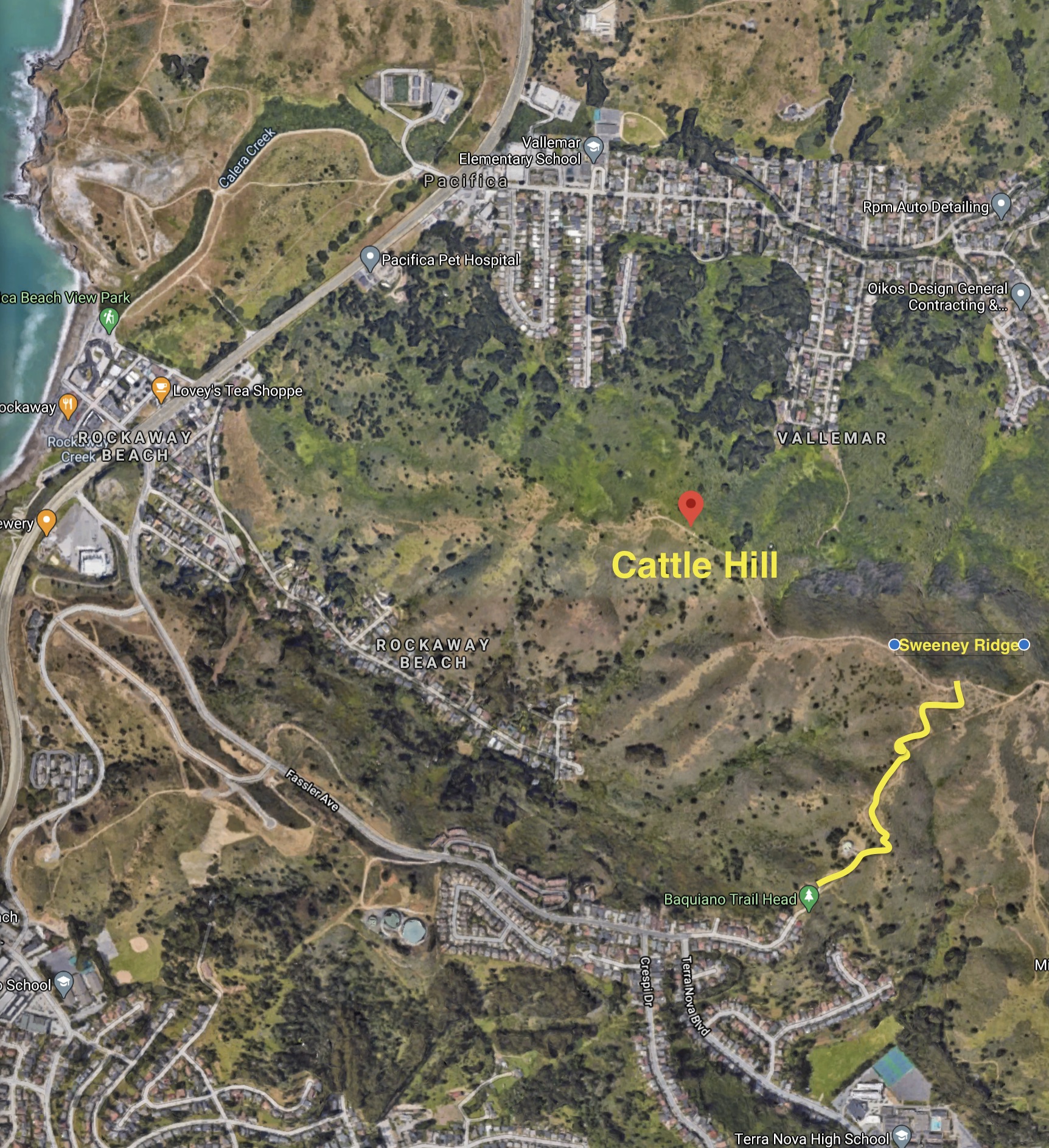|
Getting your Trinity Audio player ready...
|
NEWSLETTER. From the Half Moon Bay History Association’s Coastside Chronicles, Spring 2023. Written by Marc Strohlein. If you really love Coastside stories like these, perhaps you might like to donate or volunteer as a museum docent!?
Imagine trying to navigate your boat in fog so dense you can’t see the bow, much less anything beyond it. But then you hear the faint sound of a foghorn. As you follow the beacon to safety in Pillar Point Harbor, you become another in a long line of mariners who give thanks for that foghorn.
Much of the marine history
 of the San Mateo Coast involves fog—extremely dense fog that blankets the Coastside and has led to numerous shipwrecks and harrowing navigational experiences.
of the San Mateo Coast involves fog—extremely dense fog that blankets the Coastside and has led to numerous shipwrecks and harrowing navigational experiences.
Many a mariner would tell you that they have relied on the Pillar Point Harbor foghorn to guide them to safety in the harbor when dense fog made navigation difficult and dangerous. They regard the sound of the foghorn as a lifesaver.
Despite that, however, the foghorn, the sound- and light-emitting beacon at the mouth of the harbor is one of the more controversial landmarks in Pillar Point Harbor history.
Like most of the lighthouses and foghorns that stand watch over the country’s coastlines, the Pillar Point Harbor foghorn is owned and operated by the Coast Guard. Despite its seemingly straightforward mission, the foghorn has been the subject of controversy several times in its tenure of guiding mariners in foggy or inclement conditions, mostly due to the sound it emits while doing its work. The Coast Guard has responded to complaints by “adjusting” the foghorn multiple times with vocal responses from fishermen, boaters, and local residents.
The history of the Pillar Point Harbor foghorn begins with that of the breakwater upon which it stands. The breakwater was the culmination of many years of efforts by local fishermen, mariners, and merchants to create a safer harbor after several storms and a tsunami destroyed boats and led to loss of life. From 1959 to 1961, the Army Corps of Engineers built a jetty to protect the harbor, constructed a pier and the Harbor Master’s office, and installed the foghorn.
The foghorn stood as a not-so-silent sentinel at the mouth of the harbor for nearly four decades, operating relatively undisturbed until 1998. In April of that year, the San Francisco Examiner reported that “The foghorn was adjusted—but not silenced—in early March in response to noise complaints from guests of four waterfront hotels and some El Granada residents.” Pillar Point Harbormaster at the time, Dan Temko told the Examiner “I don’t think the (Coast Guard) realized how many people on shore rock themselves to sleep by this thing.” He also noted that after the adjustments “A lot of fishermen say they can no longer hear it” when their vessels traveling close to the shore approach the harbor entrance.
 On December 23, 2020, the Half Moon Bay Review reported “The foghorn at Pillar Point Harbor likely will remain a fixture of Coastside life following an outpouring of support in recent days.” The article followed news that the Coast Guard was soliciting feedback from the community about whether changes to the foghorn were needed.
On December 23, 2020, the Half Moon Bay Review reported “The foghorn at Pillar Point Harbor likely will remain a fixture of Coastside life following an outpouring of support in recent days.” The article followed news that the Coast Guard was soliciting feedback from the community about whether changes to the foghorn were needed.
On January 13, 2021, the Coast Guard issued the following notice in its Local Notice to Mariners Week 21/21 bulletin: “The U.S. Coast Guard is seeking data on the effectiveness and importance of the Pillar Point Harbor Entrance Light and Sound Signal, Light List number 4145, located on the eastern end of the western Pillar Point Harbor break-wall.”
At the time, Chief Warrant Officer Mickey Price of the Coast Guard’s San Francisco waterways sector office said, “It’s part of my job and my responsibility to be sure people are heard,” and “Our primary goal always has to be navigational safety, but we also have to allow opinions from the community because, when possible, we don’t want our signals to be a nuisance.” He went on to say that his inbox had been flooded by Coastsiders largely in favor of keeping the foghorn as it is, and “At this point we haven’t identified any information that would lead me to recommend any change in that particular sound signal,” Price said.
Yet soon after that first notice the Coast Guard posted: “Temporary changes have been made to the sound signal at Pillar Point Harbor Entrance Light (LLNR 4145). This change, which is scheduled to be evaluated through July 2021, has resulted in a slightly lower intensity sound signal to the North, North-East, and East of the aid. Mariners are encouraged to submit their feedback concerning any impact this change may have on navigational safety.”
Perhaps surprisingly, after all the adjustments to the original foghorn, in October 2022, the Coast Guard completed a replacement of the old foghorn. The Half Moon Bay Review reported the cost at $393,000, and the replacement was said to be due to its deterioration and the danger for staff members to safely climb and service it. The Review went on to say “The rebuilt 50-foot tower includes new housing and baffles, devices that muffle the sound. It’s thinner than the old model, but the technology remains essentially the same, with the blinking signal and booming horn every 10 seconds. The Coast Guard said the sound levels should be the same after they were adjusted last year.”
Pillar Point Harbormaster Chris Tibbe noted that many calls for help have come from boaters with cellphones but no state-of-the-art navigation systems on their vessels. Tibbe said, “search and rescue personnel can ask boaters if they hear a foghorn or see a flashing light, which helps staff locate them.” He went on to say he was “grateful to the Coast Guard for identifying funding and leading the project.”
Today, although the foghorn continues to be audible to mariners, it is largely inaudible for El Granada residents, a relief to some but instilling a sense of loss in others as another piece of the fabric of Coastside living disappears. The final chapter on the foghorn will likely be its eventual disappearance altogether. As digital navigation devices continue to get cheaper and more widespread, the Coast Guard will likely shut down the foghorn, joining many of the others that have already gone silent. For some visitors and residents, that will be a blessing, for others another piece of local history lost to the ages.






